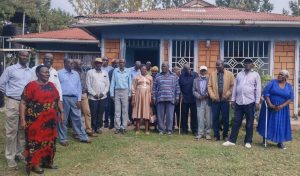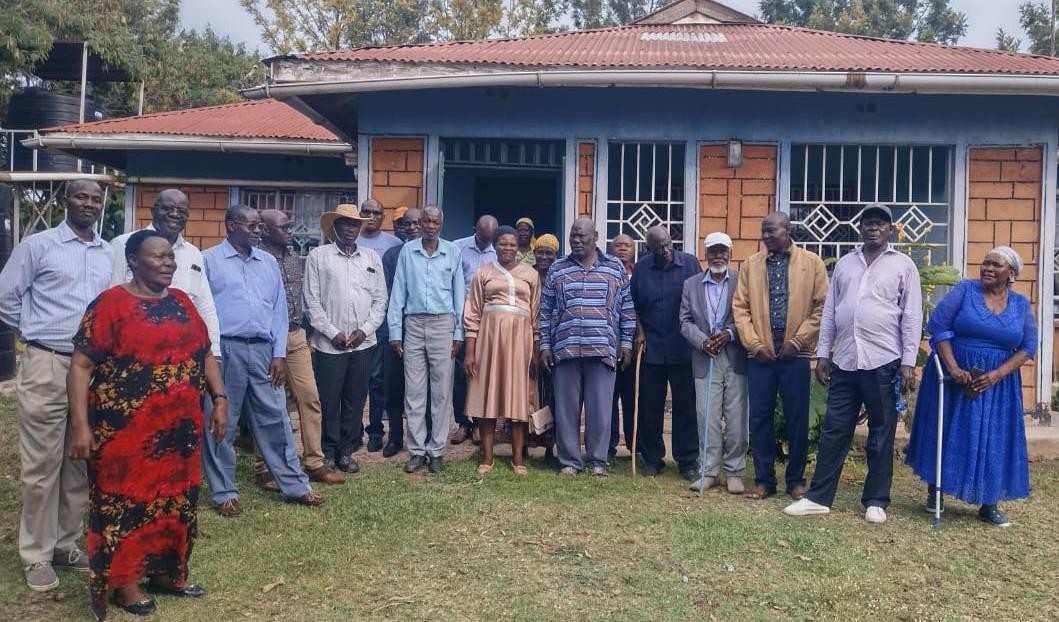By Dr Tobias Opiyo Arudo (PhD)
Climate change is presenting a major threat to farming communities worldwide, and solutions are being developed in Africa. In Siaya County, Rarieda Sub county West Uyoma location, Janam Model Farm (JMF) has initiated an innovative, eco-friendly integrated organic home-grown farming model to help respond to erratic weather patterns.
In the last nine years of JMF’s existence, the approximately two-acre farm that was originally a retirement homestead has become a beehive of activities with farmers trooping to learn and pick new ideas on land use, climate-smart farming techniques, innovative approaches and high-value crops that may provide alternatives to low-performing traditional crops being grown since time immemorial.
The farm founded by Dr Tobias Opiyo Arudo (PhD) and Dr Rose Okoyo Opiyo (PhD) is geographically located within dry rocky land approximately two kilometres from the shores of Lake Victoria, close to equator within Uyoma peninsular. It was originally, dry, rocky sterile land where no one would have expected trees or crops to grow. With scrubland vegetation, heat waves, high wind pressure, erratic weather patterns, soil erosion, no one believed it would turn out to enjoy a micro climate with cool ever green trees offering shade cover, water manually dug by hands from a sixty feet shallow well being pumped and distributed by gravity from raised water tanks to provide moisture to crops, livestock and more so to catfish in tapeline suspended water tanks.

Dr Arudo Founder of Janam Model Farm (Far Right) with Management of Arongo Water Pan West Uyoma Rarieda Subcountry, Siaya County Kenya ith Juncao Fodder Grass Planted Around The Pond to Control Soil Erosion and Provide Nutritious Feeds for Livestock
Methods used
By applying various techniques, JMF has been able to plant over six hundred different plant varieties ranging from shade trees, ornamental plants, grasses, medicinal plants, grasses, fuel wood, bamboos, fencing plants and high value crops. This was only made possible by digging trenches to help reduce the pressure of water flow that helped in reducing soil erosion, planting of plants in the trenches to help break down the rocks, and planting cover crops to retain moisture as well as improving regenerating fertile soil that helped the young saplings to take root and survive the harsh weather.
In addition to tree planting, it became evidently clear that without fencing the plot, free ranging livestock especially goats and cattle commonly left unattended after harvests would cause more damage. It was thus necessary to have proper fencing with barbed wire, top it up with chain link, chicken wire and finally natural plant fencing materials.

Janam Model Farm Climate Smart Awareness and Potentials of Landuse Training of East Uyoma Leaders and Local Farmers at Achieng Oneko School Kunya Beach
The farm was then paddocked according to preferred usage and soil qualities. The first section was for residential area, a second section was mapped out for gardening, fish ponds and livestock feeds unit. A third section was reserved for medicinal plants and an apiary. The forth was for livestock. The areas that were considered to be very rocky and dry was reserved for dragon fruits and other succulents, including aloe Vera plants. It is this section where a well was hand dug to a depth of sixty feet that is being used to supply the farm with water.
In order to reduce the usage of artificial fertilizers and pesticides, the farm has adopted push-and pull technologies by planting plants that act as repellent to various pests including snakes. Some of these plants are used by African wild bees within farm apiary for foraging of pollen thus increasing crop fertilization and productivity.
An additional innovative approach that has been applied is the introduction of catfish farming. This is not a common practice and was borrowed from Nigeria. With water available from the well, it is possible to use it in suspended tarpaulin ponds. The rich waste from the ponds get discharged into the garden thus benefiting the orchard, fodder and other crops.
This is not the only organic benefit being applied by the farm, doper sheep droppings, cows providing milk and poultry also supply the farm with nutrients that are released back to the farm with other organic matter from kitchen, leaves from trees among others. This makes the farm become interdependent, soil fertility has improved and tree cover has drastically reduced effect of heat waves creating a micro climate of its own.
Juncao Fodder Grass
An area that has put JMF on the map is introduction of Juncao fodder grass. Although the farm has a variety of fodders and pastures, Juncao grass is the main flagship it has been promoting. The grass that was scientifically engineered from China is draught tolerant, very prolific in growth. It is deep rooted, draught tolerance, highly adoptable, capable of growing in all types of soils, high nutrition content and may be used for soil control.
With unpredictable weather patterns, Juncao grass has become a lifeline for farmers. It is capable of being harvested six times in a year, and may be processed into silage and sored for two to five years, it has no known pests or diseases. It may be used to feed both dairy and beef cattle, sheep, goats, pigs, rabbits, camel, poultry, fish as well as substrate for mushroom production. It may be processed as pallets or pulverised into powder.
Juncao may grow in all types of soil and may reach a height of two and a half meters in the first ninety days ready for its first harvest. Subsequent harvests may take sixty days. For multiplication, it may require between one hundred and twenty to one hundred and fifty days. After planting, a single eye will generate between ten and sixteen tills. After the first planting two inches above the ground, it will triple its tills up to between thirty to forty tills. Unlike other livestock feeds, Juncao grows infinitum, retaining its nutritional content making one of the best livestock feeds in the market today.
With its high nutritious protein content, well spread rooting, Juncao Grass has very good water stress tolerance making it one of the best fodder for dry land livestock feeds. While in high rainfall areas, it reduces the cost of production as it depresses growth of weeds thus reducing the need for weeding. After harvest, it only requires topping up with additional compost.
Besides, Juncao grass, JMF has introduced dragon fruits within our very rocky dry patch of land. Being dry land crop of cactus family, it requires less water as it has only six inches of rooting. It has aerial roots and may be grown in containers with imported soil and compost. Dragon fruits produces one of the most expensive medicinal fruits, mostly used for management of immune-deficient symptoms and patients recuperating from surgery, among other applications. Its introduction In the farm has made it possible to economically utilise the most infertile space to become one of the highest income spaces in the farm.
JMF has been identified by the Department of Livestock in Kenya to become a major sheep breeding centre, a model for farmers for benchmarking and has a growing number of partnerships with private and various technical institutions. With her Plug-In Partnership concept, JMF is reaching out to empower interested potential partners by supplying them with seeds, offering training on credit and symbiotically enjoying synergy with her partners across the region.
A combination of intensive, integrated organic eco-friendly farming methods and visibility within social media has drawn interest among local and international diaspora community activities of JMF. The farm, though small in size, her innovative simple and practical approaches has made her get recognition of coming up with unique home-grown solutions to help rural communities adapt to climate change through the uptake of practical trials and visible results, as opposed to ideas being promoted from scholarly works. It is hoped that overtime, local communities will not only uptake these approaches, but will upscale them, hence empowering rural poor communities by improving their income, creating employment through value chain effects.






No comment